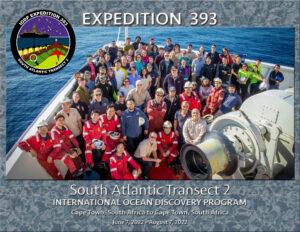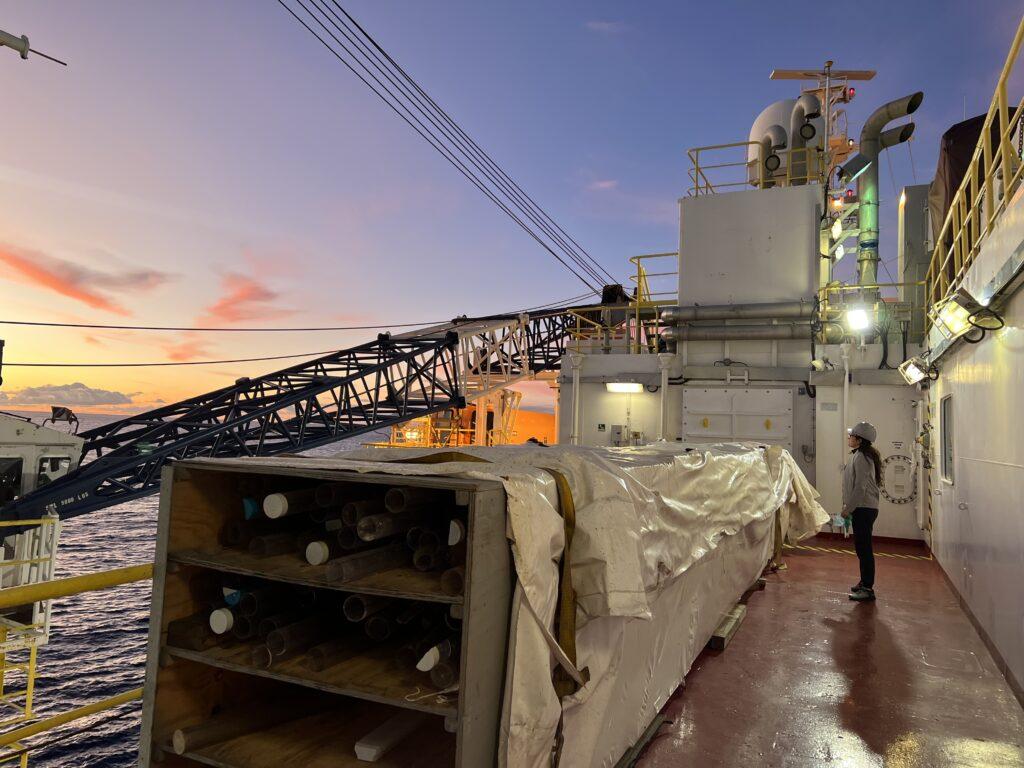
End of Expedition To do’s
The last week of our expedition involves scientists finding quiet corners during the transit back to Cape Town to work on their site reports, of which they have to write between 4-7 depending on whether they work with both sediment and hard rock or just one of them. However, the last week also involves clean-up, repair, restocking our lab shelves, ordering, and packing up materials for the ship crew, which involves the technicians and rig crew running back, forth, up and down the ship. We have seven floors on this ship that are sued as storage and as active lab space, the up and down movement of anyone on this ship happens very frequently throughout the day.
To get a glimpse into what happens for the technicians and rig crew I asked them to give me a summary of their responsibilities for the last week of the expedition.
What do the laboratory technicians do?
The labs get messy; we clean surfaces and exposed floors as much as we can throughout the expedition, but can’t always get as meticulous as possible. There are blue drainage mats on parts of the floor that help us not to slip when dealing with wet cores but also make it hard to clean the floors. Thus, those are the first to be taken outside, hosed off, dried, and at the same time the inside lab floors are swept, mopped, and buffed. At this point people start to become very aware of what shoes everyone is wearing so we don’t mess up the very shiny white floors we have now.
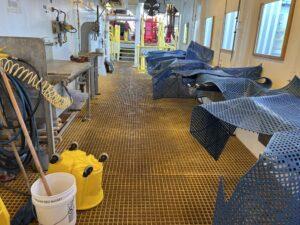
The floors aren’t the only thing getting cleaned; everything is cleaned and decontaminated so that the next crew can readily use them. All materials that can be stored are put away, which is when the labs start to look decluttered. Another very visible and obvious task you see the technicians do is to package the samples scientists have requested to be sent to their home institutions. The splitting room becomes the ship’s post office as everything gets bagged, boxed, and labeled. Samples that need to be refrigerated or frozen during transport are sent via World Courier Frozen and Refrigerated. This is critical for the preservation of some samples. For example, microbiology samples need to have intact DNA to test for what kind of microbial life is in the rock or sediment, therefore freezing temperatures reduce the risk of damage to the DNA.
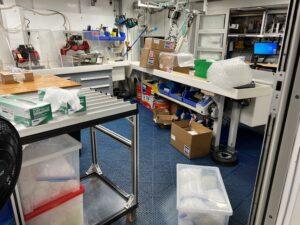
The cores we have collected have to leave the ship to make room in the reefer (refrigerated room in the hull of the ship) for new cores to be collected during future expeditions. These cores will get boxed and then palletized (yes, that is a word) so they can be shipped to their respective destinations. Some of them will go to College Station, Texas while some will go to Bremen, Germany. The reefer can fit over 3000 meters worth of core, which can be easily achieved if you are on a sediment focused expedition in shallow waters. Expedition 393 focused on both sediments and hard rock and reached about 300 meters worth of sediment cores that require refrigeration. The picture of the reefer below shows the room filled with cores from previous expeditions that have not been taken off the ship just yet as well as cores we collected.
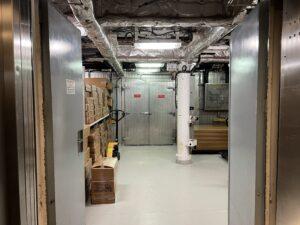
Meanwhile, an inventory of critical items is taken so we know what we have on board for the next expedition. Remember, if you are out at sea you need to have back-ups of back-ups because there is no store to get more if you run out. Without some tools, instruments, or other materials you might not be able to fix an issue, complete an analysis, or use a machine.
In between each hands-on task, digital preparations are being made. Reports of what was done during the expedition like equipment issues and fixes, types of measurements and amount of them made, and any special procedures that had to be conducted are discussed to have a record of the expedition. These reports are then given to the oncoming crew so they can be aware of what has happened and what they might need to do to keep things working.
What does the rig crew have to do?
Expedition 393 had the fortune of having a long transit to our first drill site which means the rig crew had time to prepare their equipment and material, however, that is not the case for every expedition. Therefore, when one crew hands over the operations to the new crew it is best to hand over the ship in a way that provides them with the opportunity to efficiently continue operations in a rather quick turnaround. Similar to the technicians, the rig crew has to inspect, clean, repair, and restore all of the drilling and coring assemblies and equipment. Cleaning and maintenance are critical to ensure the longevity of the vessel and machinery.
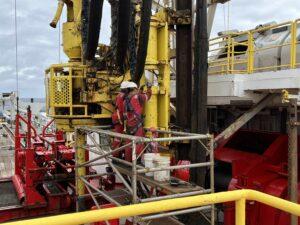
There are some pieces of equipment on board that are called consumables because they are meant to wear faster than the larger machines. Therefore, the crew has to conduct inventory to determine how many of those parts have been used to replace those that are worn, and how many of those parts we have as back-ups. Once that is determined an order can be placed for replacements. With the ongoing Covid-19 pandemic, delivery times have become much longer increasing the risk of just not receiving needed items, especially for custom made parts. Usually, for urgent items, we will use air freight, which is not ideal because of its cost and carbon footprint. It was interesting to find out that the plastic core liners used for coring are always needed, no matter what the focus of an expedition is. Essentially, we go through them so fast that there is always an order for more liners placed for two expeditions from now and an order being delivered for the upcoming expedition. The inventory of coring equipment, drilling equipment, spare parts and tools is meant to establish a whole new set of drilling operations should we need to.
Shutting down operations and preparing for another expedition involves logistics, organization, schedules, and a timely completion of tasks. These aren’t the only parts of the ship needing to shut operations down. The sailing crew ensures that we have a place at the port to dock the ship; the accommodations crew makes sure all rooms on the ship are deep cleaned and prepared for the oncoming crew; and the engineering crew makes sure that every system on board (septic, drinking water, propeller, and more) functions properly for the ship to go back out to sea after a quick turnaround in port.
Even though Expedition 393 is coming to an end, the JOIDES Resolution will sail again very soon. Make sure to stay updated by following the social media pages because there is always something to learn about life at sea.
